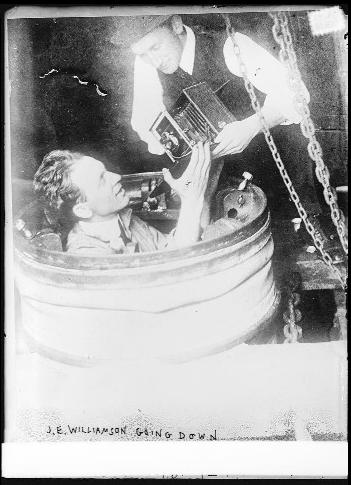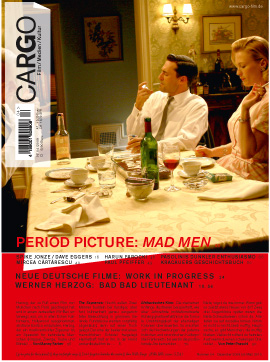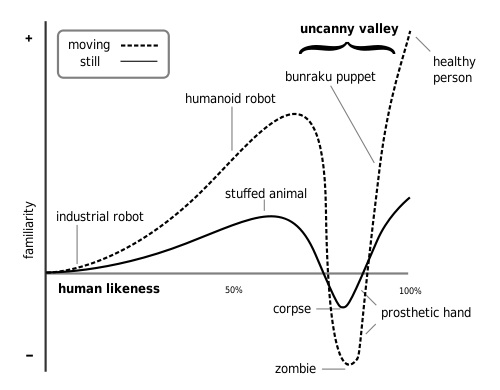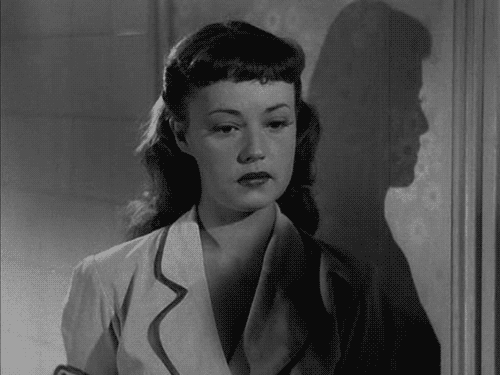Tiefe und Täuschung

Die Erfindung seines Vaters, eine akkordeonartige flexible Röhre für Schiffsreparaturen und Bergungsarbeiten auf See, nutzte der Sohn erstmals 1912 zum Zwecke der Meersfotografie – und ab 1914 für die Filmproduktion.
Der Unterwasserfilmpionier John Ernest Williamson (1881-1966) versorgte Universal (Twenty Thousand Leagues under the Sea, 1916) und MGM (The Mysterious Island, 1926-29) mit Szenen an Originalschauplätzen. Den großen Naturkundemuseen in Chikago und New York verschaffte er Material zur Anschauung.
Die meisten seiner Filme sind verschollen. In Wonders of the Sea machte er sich 1922 „vor den Bahamas auf die Suche nach einem Seemonster. Ein Dokumentarfilm mit sichtlich für die Kamera gespielten Szenen, teils heiter, teils aufregend (Attacken von Oktopus und Hai), mithin: das genredefinierende Film-Meeresabenteuer.“ (Christoph Huber)
In Under the Sea (1929) steigt Williamson mit Frau und Baby in die Tiefseeröhre hinab, während einheimische Fischer für das Field-Museum baumgroße schneeweiße Korallen an Land schaffen. Mit vereinten Kräften wird am Ende ein lebendiger Hai auf den Strand gezerrt, getötet und in Gips abgedruckt. Ein traumhafter Film über Arbeit und Tod.
1917 hat Williamson ein bemerkenswertes Patent angemeldet: „zur künstlichen Herstellung lebensechter Bewegungen unbelebter Objekte“, insbesondere zur Simulation der Bewegungen von Unterwasserkreaturen. Er hatte rausgefunden, wie deren Unberechenbarkeit mechanisch erzeugt werden kann – „for theatrical or other purposes“.


